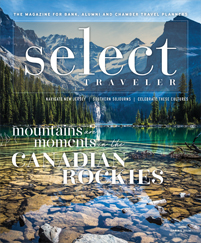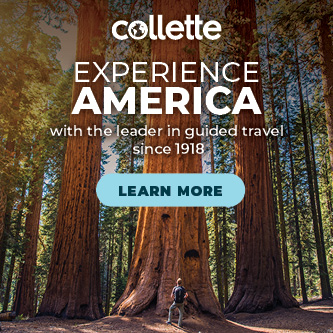Nothing says luxury in travel like good wine.
If you have sophisticated travelers among your membership, chances are that some of them enjoy wine and wine culture. For these travelers, a wine tour might be the most exciting trip you could offer. And wine-focused tours might be clever ways to entice some of your members that haven’t traveled with you before to give your trips a chance.
To give you some insight on how to put together wine tours that will win with your travelers, we spoke with representatives of two high-quality wine regions — New York’s Finger Lakes and Oregon’s Willamette Valley — and gathered five tips for helping you plan a wine trip for your group.
1) Find an inviting wine region to visit.
For many people, a wine vacation means a pilgrimage to Napa Valley in California or to the French countryside. And although these are world-class wine destinations, trips to these areas can be expensive and crowded. So before taking the leap to California or Europe, consider visiting one of the other wonderful wine regions in the United States.
Oregon’s Willamette Valley, which stretches roughly from Portland to Eugene, is a great West Coast alternative to Napa or Sonoma.
“We’re home to a little over 500 wineries in the valley, and most of them are pinot noir producers,” said Becca Barnhart, public relations and marketing manager for the Willamette Valley Visitors Association. “We have wine throughout the entire region. It’s really different, and there’s wonderful geographic diversity.”
The Finger Lakes region of central New York is another interesting wine destination, featuring more than 130 wineries, many that sit overlooking the lakes.
“The Cayuga Lake Wine Trail was the first wine trail in America,” said Laury Poland, president of the Finger Lakes Wine Country Tourism Marketing Alliance. “That lake is under 40 miles from tip to tip, so traversing the trail is not very time consuming.”
2) Plan with experts.
The country’s most prominent wine destinations have quite a bit of infrastructure dedicated to moving tourists from winery to winery. But you don’t need a wine train or a commercial wine tour company to give your group an excellent wine experience. Working with local tourism offices and visitors bureaus will help you put together itineraries that include the best stops in the area and identify which wineries are well equipped to work with groups.
“Sometimes smaller wineries don’t allow large buses, because they don’t want a 54-person group to overwhelm their tasting room,” Poland said. “If you have more than eight people, you need to call ahead. If you go on our website, you can look at maps of the lakes and plot out the wineries you want to visit.”
In Oregon, the Willamette Valley Visitors Association has produced themed itineraries and maps, such as “Long Weekend in Oregon Wine Country,” that offer information about wineries, and ideal timing and routing; that way, travelers can spend their time enjoying the wineries instead of organizing their trip.
3) Ask for special experiences.
One of the downfalls of planning wine-themed tours is that they can become somewhat repetitive as wineries tours and tasting experiences begin to blend together in the minds of travelers. To make the trip more memorable, consider asking wineries for special experiences that will thrill wine novices and experts alike.
“Some of our wineries offer a tasting class with the winemaker along with the winery tour,” Barnhart said. “If you contact them ahead of time, they can often open up the cellar and do a barrel tasting or a private tasting. Some sort of activity like that is always available if you ask.”
In the Finger Lakes, Poland said the Dr. Konstantin Frank Winery offers a high-end activity for groups that is very popular, called the 1886 Reserve Tasting Room Experience.
“This winery produces phenomenal wines, and they have opened the 1886 Reserve Room for higher-end, more-exclusive tastings,” she said. “It changes every month to focus on a different type of wine. You get the local flavor and history and one-on-one attention from the winemakers and owners.”
4) Include other foods and drinks.
Wine tasting might be the headliner on your wine tours, but you shouldn’t focus on wine to the exclusion of other food and drink experiences. Many areas that have interesting wine cultures also enjoy fabulous culinary scenes with an emphasis on fresh, local ingredients. And some are branching out into other types of beverages as well.
The 1886 Reserve Tasting Room Experience in New York features high-end food pairings along with the wines visitors taste, giving them a lunch’s worth of small bites. And that’s just one example: Poland said many of the wineries in the area include restaurants run by celebrated chefs where visitors can linger over a meal and enjoy lakefront views and live music during the evenings.
The Finger Lakes is also home to a growing craft brewing and distilling scene, and including a handful of these kinds of stops on the tour will help engage travelers who might prefer beer and spirits to wine.
5) Don’t forget other attractions.
A good wine trip should include plenty of winery tours and tastings, but it would be foolish to overlook the other enjoyable experiences that destinations offer. To keep the days interesting — and keep the travelers sober — consider interspersing the wine activities with visits to other area attractions.
“We have an adventure company called Evergreen Escapes in Portland that offers a Wine and Waterfalls tour,” said Barnhart. “It’s a full day of tastings and waterfall excursions, because we have a lot of waterfalls that are really accessible.”
Since the Willamette Valley is such an outdoor paradise, locals encourage visitors to mix their wine tasting with activities that will help them enjoy the natural abundance of the area.
“We try to stay health conscious and make sure you’re doing something active, and then you get rewarded by going to a winery,” Barnhart said. “We have options such as you-pick farm tours or covered-bridge tours. There are also included cultural and historical opportunities for museums and shopping in downtowns.”









